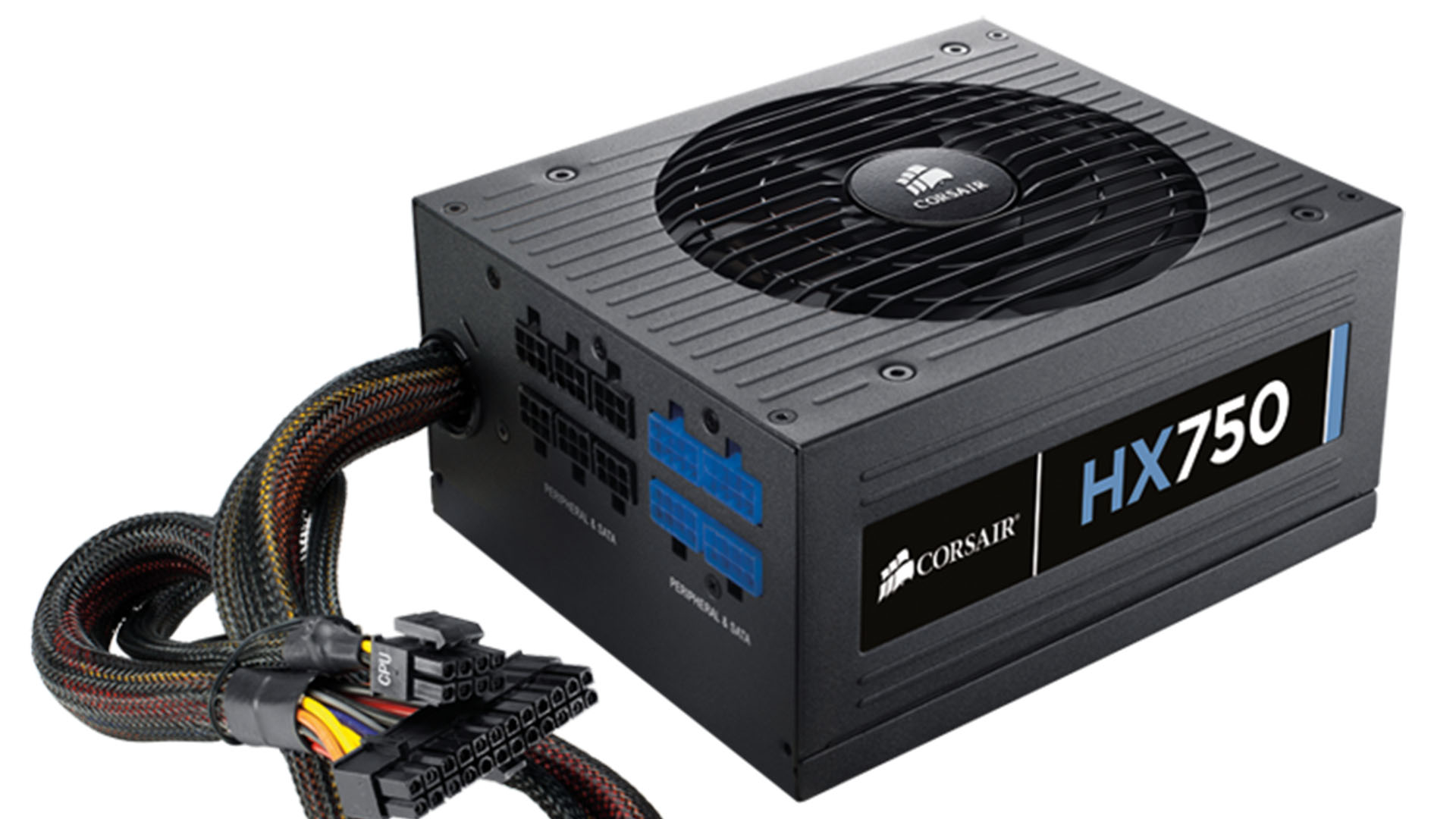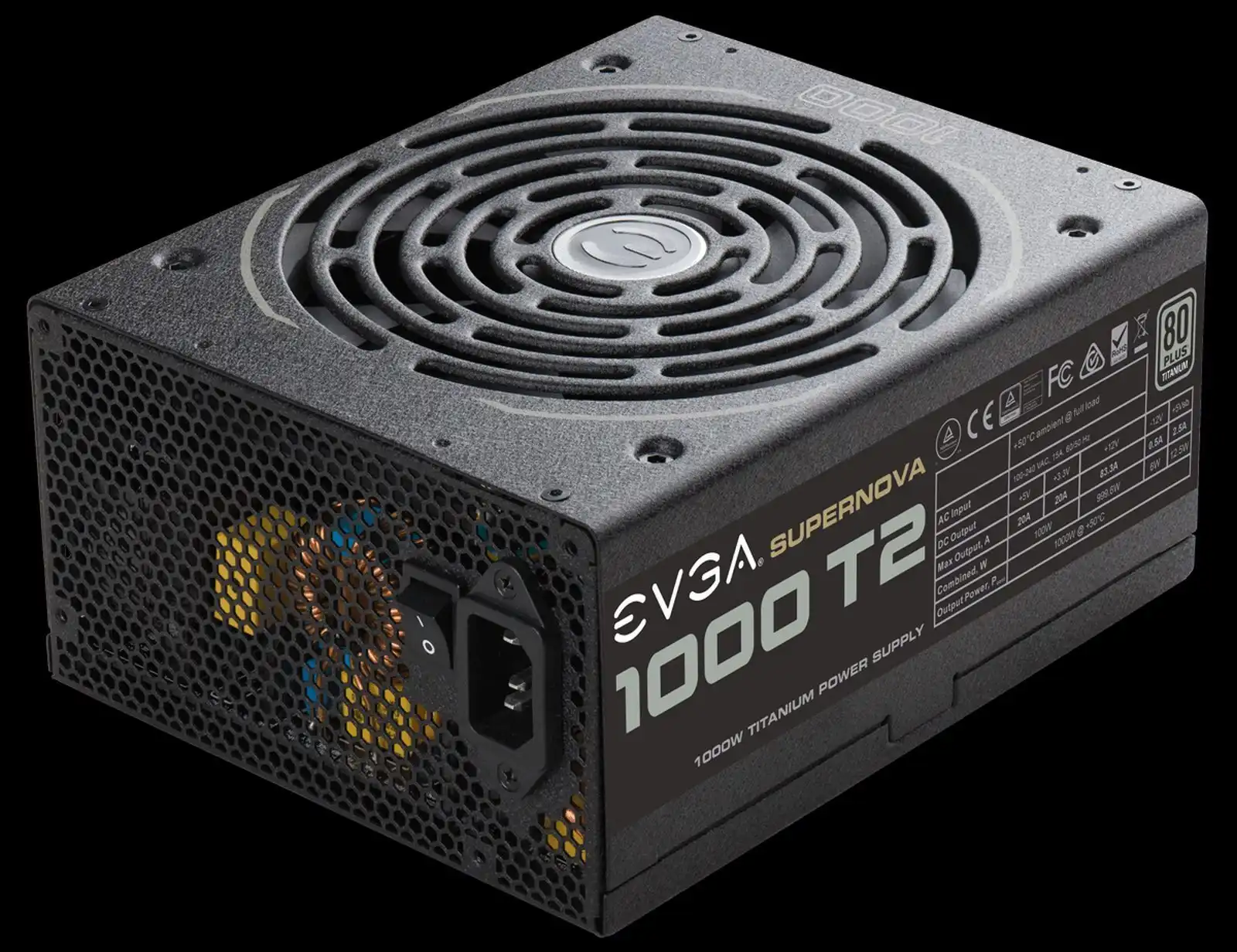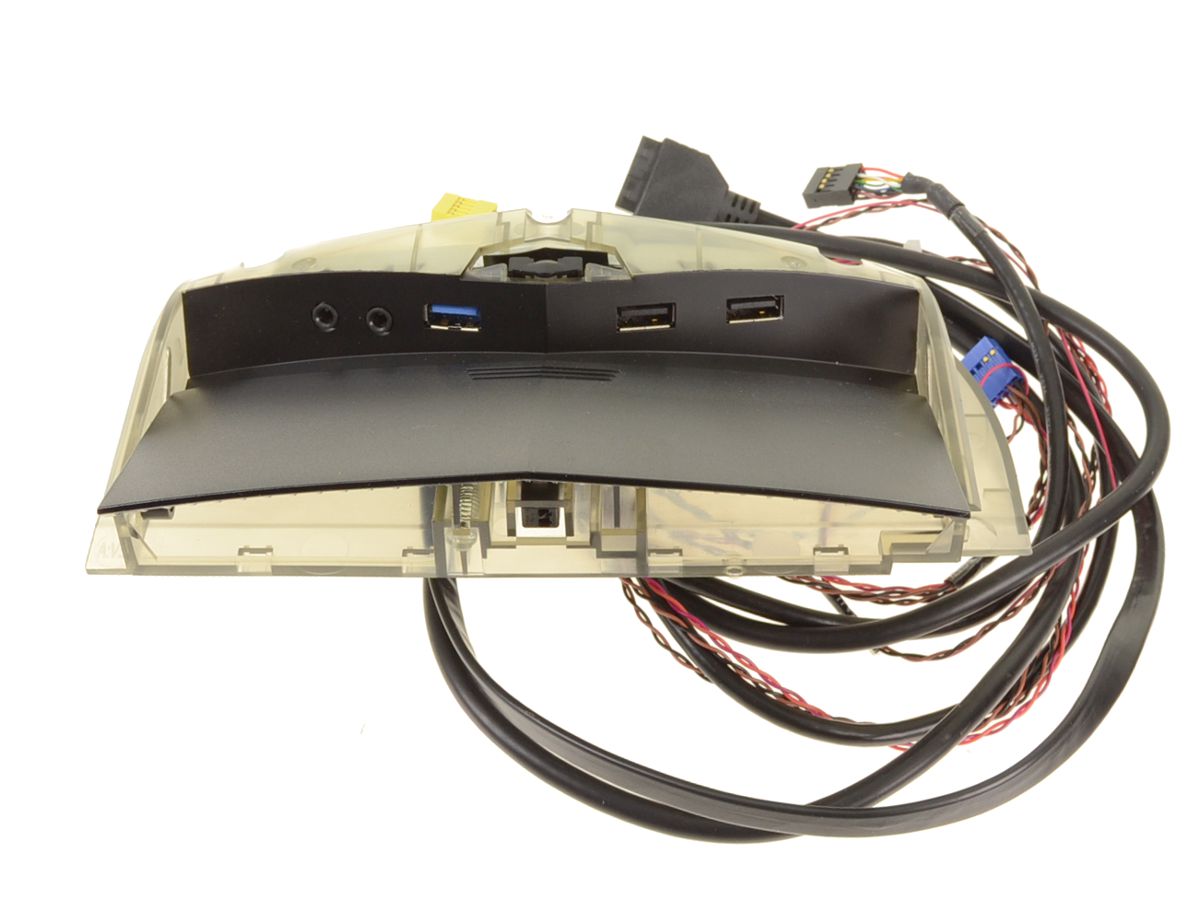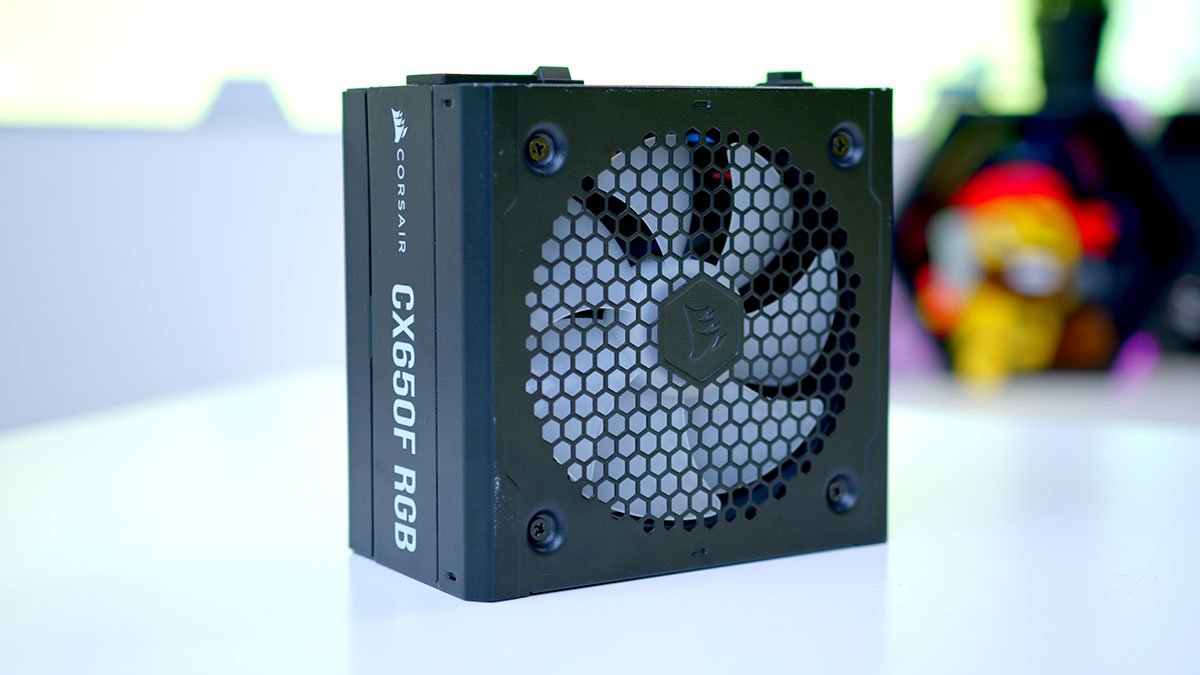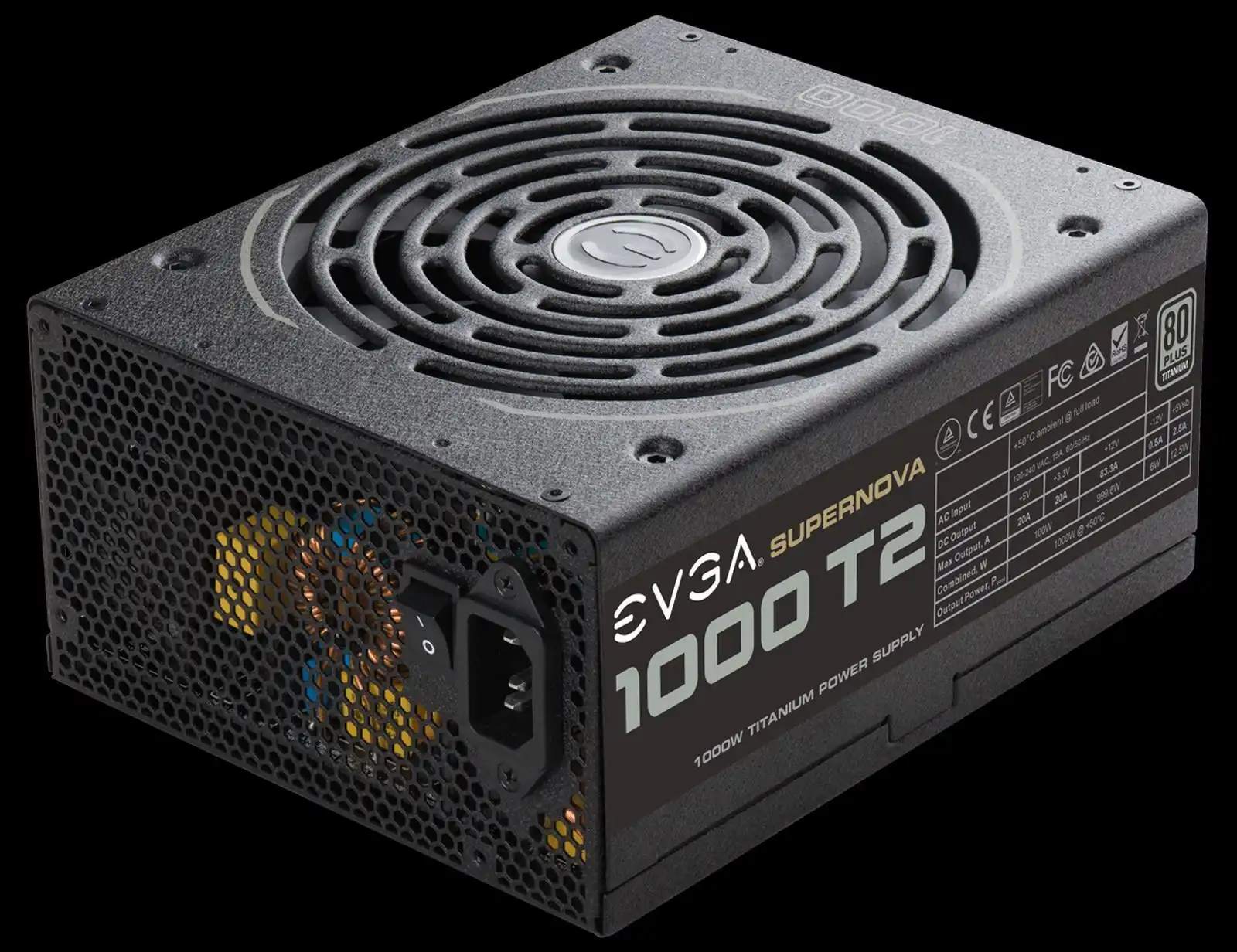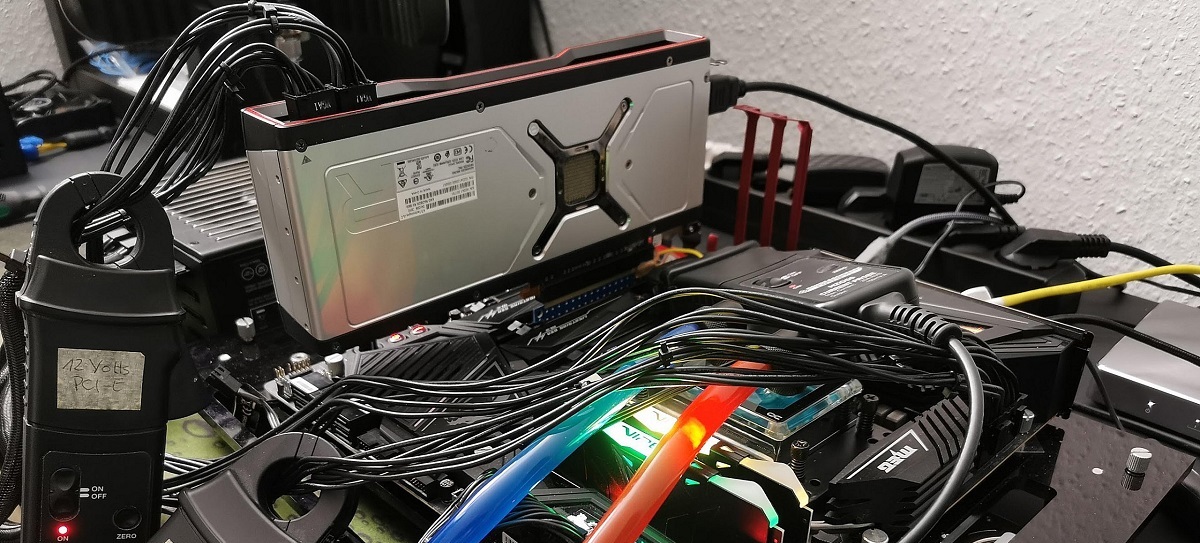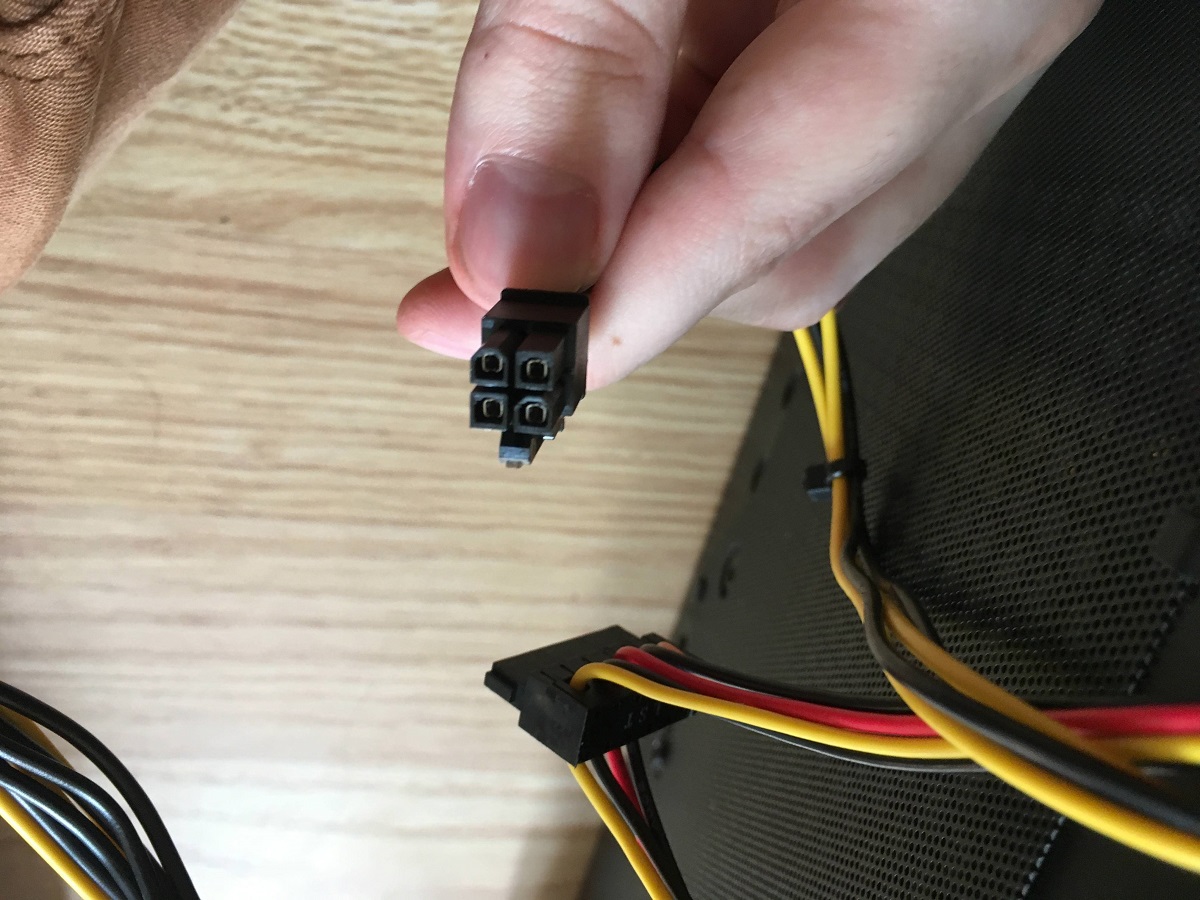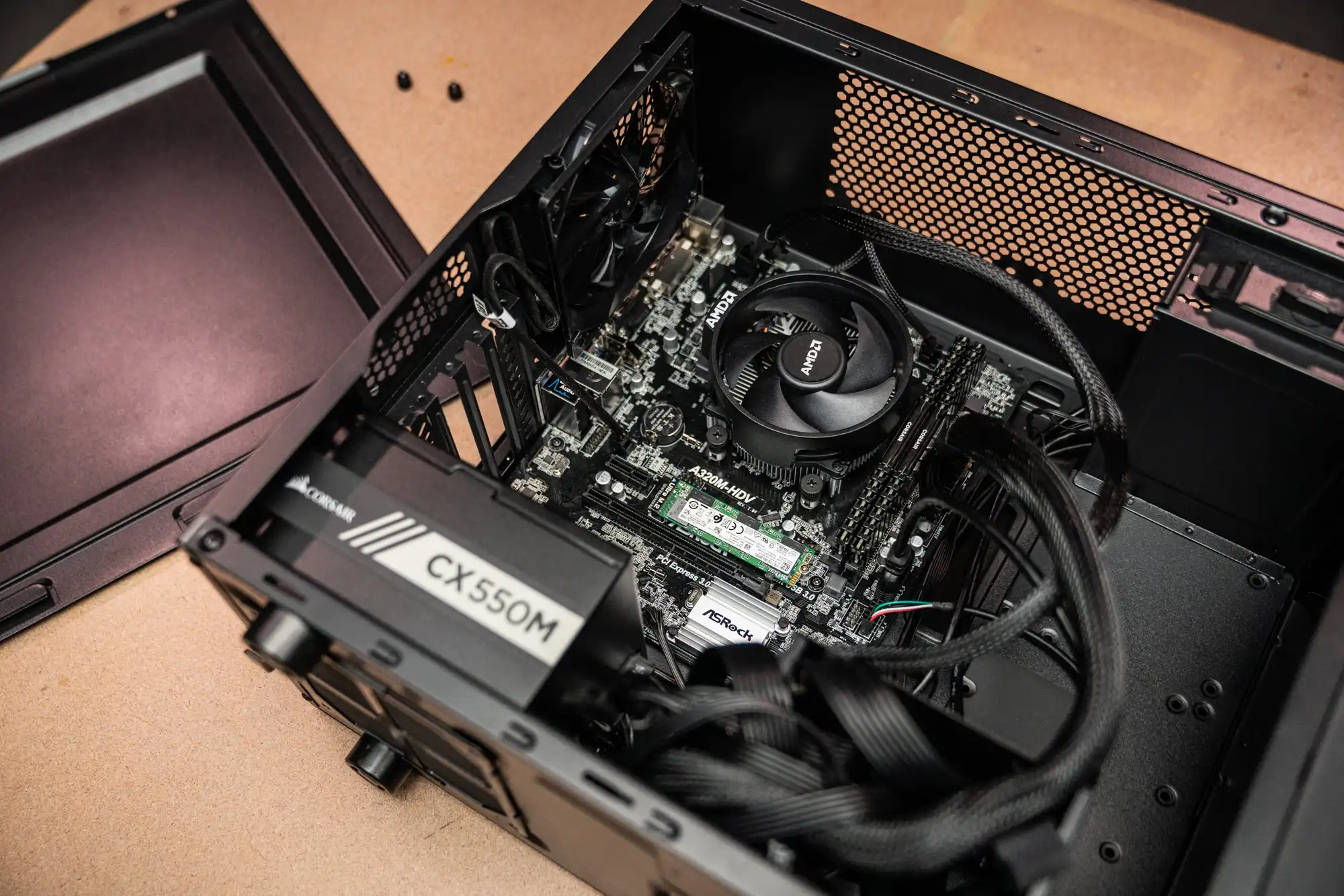Introduction
In today’s digital age, electronic devices have become an integral part of our lives. From personal computers and gaming consoles to servers and data centers, these devices rely on a stable and sufficient power supply to function optimally. That’s where a Power Supply Unit (PSU) comes into play.
Understanding the wattage requirement of your PSU is crucial to ensure that your system runs smoothly and efficiently. Without the right PSU wattage, you may encounter issues such as system crashes, hardware failures, or even potential damage to your components.
This article serves as a practical guide to help you calculate the PSU wattage you need. By following the steps outlined in this guide, you can confidently select a power supply that is suitable for your specific requirements.
So, whether you’re a DIY PC builder, upgrading your existing system, or simply curious about the technical aspects of PSUs, this article will provide you with the knowledge you need to make an informed decision.
Before we delve into the details, let’s begin by understanding what a PSU is and its role in powering your electronic devices.
Understanding Power Supply Units (PSUs)
A Power Supply Unit (PSU) is a crucial component in any electronic device that requires power. It is responsible for converting the alternating current (AC) from your electrical outlet into direct current (DC) that can be utilized by your computer or other devices.
PSUs come in various shapes, sizes, and capacities, and they are designed to provide a stable and reliable power source to the components within your system. They are commonly used in personal computers, servers, gaming consoles, and other electronic devices.
One of the key factors to consider when choosing a PSU is its wattage. The wattage rating of a PSU indicates the amount of power it can deliver to your system. It is crucial to select a PSU with adequate wattage to efficiently power your components, ensuring their optimal performance and longevity.
PSUs can be categorized into two main types: standard and modular. Standard PSUs come with fixed cables, while modular PSUs offer the flexibility of detachable cables. Modular PSUs can be advantageous for cable management, allowing you to connect only the necessary cables and reduce clutter within your system.
Another important aspect to consider when selecting a PSU is its efficiency rating. PSUs vary in terms of their efficiency levels, commonly referred to as 80 Plus ratings. The higher the rating, the more efficient the PSU is at converting AC power to DC power. A higher efficiency PSU not only reduces energy waste but also produces less heat, leading to a more stable and cooler system.
Keep in mind that PSUs also come with different certification levels such as Bronze, Silver, Gold, and Platinum, indicating their level of efficiency. It is recommended to choose a PSU with at least an 80 Plus Bronze certification to ensure reliability and efficiency.
Now that we have a basic understanding of what a PSU is, let’s delve into the components that make up a power supply and their functions in delivering power to your system.
Components of a Power Supply
A Power Supply Unit (PSU) consists of several essential components that work together to deliver the required power to your system. Understanding these components is essential in determining the overall efficiency, reliability, and performance of your PSU.
1. Transformer: The transformer is responsible for converting the high-voltage alternating current (AC) from your electrical outlet to a lower voltage suitable for your system’s components. It helps in stepping down the voltage before further processing.
2. Rectifier: The rectifier converts the AC power into direct current (DC) power. It utilizes diodes to convert the alternating current to a steady flow of electrical current in one direction, which is essential for powering your electronic components.
3. Capacitors: Capacitors help to store and regulate the electrical charge, ensuring a stable supply of power to the system. They work alongside the rectifier to smooth out any fluctuations in the power supply, minimizing the risk of damage to your components.
4. Voltage Regulator: The voltage regulator monitors and controls the output voltage to ensure it remains steady and within the required range. It prevents any potential voltage spikes or drops, safeguarding your system from power-related issues.
5. Cooling System: PSU components generate heat during operation, and to maintain optimal performance and prevent overheating, a cooling system is incorporated. This typically consists of a fan or fans that help to dissipate heat and keep the PSU and surrounding components cool.
6. Power Connectors: Power connectors, such as ATX and PCIe connectors, are responsible for distributing power from the PSU to various components within your system. These connectors ensure a secure and reliable power connection, minimizing the risk of power loss or electrical damage.
7. Protections: PSUs are equipped with built-in protection mechanisms to safeguard your system from potential hazards. These protections include overvoltage protection, undervoltage protection, overcurrent protection, and short-circuit protection, among others. These features play a crucial role in preserving the longevity and stability of your system.
Understanding the components of a power supply is vital in evaluating the quality and performance of different PSU models. By considering these components and their functionalities, you can make an informed decision when selecting a PSU that best meets your system’s power requirements.
Calculating the PSU Wattage Requirement
Calculating the wattage requirement for your Power Supply Unit (PSU) involves considering the power needs of your components and ensuring that your PSU can handle the load without being overloaded or operating at its maximum capacity constantly. Following these steps will help you determine the appropriate wattage for your PSU:
Step 1: Identify the Power Requirements of Each Component
Start by listing all the components that need to be powered by your PSU. This includes the motherboard, CPU, graphics card, storage devices, RAM, and any other peripherals such as fans, LED lights, or cooling systems. Check the specifications of each component to determine their power requirements in watts. These specifications can be found on the manufacturer’s website or product documentation.
Step 2: Determine the Total Power Consumption
Add up the power requirements of all the components. Sum the wattage numbers to get the total power consumption of your system. Keep in mind that some components may have minimum and maximum power requirements, so it’s best to consider the maximum values to ensure that your PSU can handle the load under peak usage.
Step 3: Accounting for Efficiency
PSUs have an efficiency rating that indicates how effectively they convert AC power to DC power. To account for this, divide the total power consumption obtained in Step 2 by the PSU’s efficiency rating. For example, if your system’s total power consumption is 400 watts and your PSU has an 80% efficiency rating, divide 400 by 0.8 (or multiply by 1.25) to get the estimated wattage requirement.
Step 4: Considering Upgrades and Future Requirements
It’s important to consider any potential upgrades or additions to your system in the future. If you plan to upgrade your graphics card, add more storage, or install additional peripherals, account for their power requirements as well. Including these future power needs will ensure that your PSU is capable of handling any expansions without requiring an immediate upgrade.
Step 5: Selecting the Right PSU Wattage
Based on the calculated wattage requirement from Step 3, choose a PSU with a wattage rating that is equal to or slightly higher than the obtained value. It’s generally recommended to have some headroom, as operating a PSU near its maximum capacity for extended periods can lead to reduced efficiency, increased heat, and potential reliability issues.
By following these steps, you can accurately calculate the wattage requirement for your PSU, ensuring that your system receives sufficient power for optimal performance and stability.
Step 1: Identify the Power Requirements of Each Component
When calculating the wattage requirement for your Power Supply Unit (PSU), it’s crucial to identify and assess the power requirements of each component in your system. Understanding how much power each component consumes will help you determine the overall power demand of your system. Follow these guidelines to effectively identify the power requirements:
1. Motherboard: Start by examining the documentation or specifications provided by the motherboard manufacturer. Look for the maximum power consumption for the motherboard itself. Keep in mind that some high-performance motherboards may require additional power through supplemental connectors, such as 8-pin or 24-pin power connectors.
2. CPU: The central processing unit (CPU) is one of the most power-hungry components of a system. Check the specifications of your CPU to find its maximum power consumption. This information can usually be found on the manufacturer’s website or in the product documentation.
3. Graphics Card: If you have a dedicated graphics card, it is important to consider its power requirements. Graphics cards are known for their high power consumption, especially high-end gaming GPUs. Refer to the manufacturer’s specifications or product documentation to determine the power requirements of your graphics card.
4. Storage Devices: Hard drives, solid-state drives (SSDs), and other storage devices also consume power. While their power consumption is generally lower compared to other components, it’s still important to consider them in your calculations. Check the specifications provided by the manufacturer to find the power requirements for each storage device.
5. RAM: Random access memory (RAM) modules have relatively low power requirements compared to other components. Nevertheless, it’s good practice to include them when calculating the overall power demand of your system. Refer to the specifications of your RAM modules, usually available on the manufacturer’s website or product documentation, to find their power consumption.
6. Peripherals and Accessories: Don’t forget to factor in the power requirements of any peripherals or accessories you have connected to your system. This includes devices such as fans, LED lighting systems, liquid cooling pumps, and other components that draw power from the PSU. Check the specifications or documentation provided by the manufacturer to determine the power requirements of these devices.
By identifying the power requirements of each component, you can compile a comprehensive list of the power consumption numbers. This information is essential for accurately calculating the overall wattage requirement of your PSU. Remember to consider both the typical power requirements and the maximum values to ensure that your PSU can handle peak power demands without being overloaded.
Step 2: Determine the Total Power Consumption
After identifying the power requirements of each component in your system, the next step in calculating the wattage requirement for your Power Supply Unit (PSU) is to determine the total power consumption. By adding up the power requirements of all the components, you can obtain an estimate of the overall power demand of your system. Follow these guidelines to calculate the total power consumption:
1. Summing Individual Power Requirements: Take the list of power requirements you obtained for each component in Step 1 and add them together. This will give you the total power consumption in watts. Be sure to use the maximum power requirements for each component, as it’s important to account for the peak power demands of your system.
2. Considering Additional Power Draw: Keep in mind that there may be additional power draw in your system that is not directly accounted for in the individual component power requirements. These additional power draws can come from USB devices, peripherals, or other accessories that are connected to your system. Consider the power requirements of these devices and add them to the total power consumption as well.
3. Accounting for Efficiency Loss: It’s important to note that the power ratings specified by the individual components do not account for efficiency loss during power conversion within the PSU. PSUs typically have an efficiency rating, which indicates the effectiveness of converting AC power to DC power. To account for this efficiency loss, it’s recommended to multiply the total power consumption by a factor of 1.1 to 1.2. This provides a buffer for efficiency loss and ensures that your PSU can handle the actual power requirements of your system.
4. Reviewing Power Supply Safety Margins: In some cases, it may be advisable to add an additional safety margin to the calculated total power consumption. This is especially important if you plan to overclock your system or if you anticipate adding more power-hungry components in the future. Adding a 10-20% safety margin will provide headroom for any power spikes or potential upgrades, ensuring that your PSU operates within its optimal range.
By determining the total power consumption of your system, you will have a clearer idea of the overall wattage requirement for your PSU. This information is essential when selecting a PSU that can meet the power demands of your system without being overloaded or operating at maximum capacity for an extended period of time.
Step 3: Accounting for Efficiency
When calculating the wattage requirement for your Power Supply Unit (PSU), it’s important to account for the efficiency rating of the PSU. PSU efficiency refers to how effectively the unit converts alternating current (AC) power from your electrical outlet into direct current (DC) power that is usable by your components. By considering the efficiency rating, you can ensure that your PSU delivers the required power with minimal energy waste. Follow these guidelines to account for efficiency when calculating your PSU wattage requirement:
1. Determine PSU Efficiency: Refer to the product specifications or documentation for your PSU to determine its efficiency rating. PSU efficiency is commonly denoted by certifications such as 80 Plus Bronze, Silver, Gold, or Platinum. Each certification represents a different level of efficiency, with Platinum being the highest. The efficiency rating indicates the percentage of power that the PSU can convert from AC to DC without energy loss during the conversion process.
2. Calculate Estimated Power Requirement: Take the total power consumption of your system, which you obtained in Step 2, and divide it by the efficiency rating of your PSU. For example, if your system’s total power consumption is 400 watts and your PSU has an 80% efficiency rating, you would divide 400 by 0.8 (or multiply by 1.25). This calculation yields an estimated wattage requirement that accounts for the efficiency loss during power conversion.
3. Consider Efficiency as a Percentage: If your PSU does not have a specific efficiency rating stated, you can estimate the efficiency as a percentage. For example, if you estimate that your PSU has an efficiency of 85%, you would divide the total power consumption by 0.85 to calculate the estimated wattage requirement.
4. Efficiency and Energy Savings: Investing in a PSU with a higher efficiency rating can lead to energy savings over time. A more efficient PSU reduces energy waste, runs cooler, and produces less heat. This not only lowers your electricity bill but also contributes to a greener and more environmentally friendly system.
5. PSU Recommendations: It is generally recommended to choose a PSU with at least an 80 Plus Bronze certification or higher. This ensures a minimum level of efficiency and reliability for your system. However, if you are building a high-performance rig or plan to use your system for intensive tasks, considering a PSU with a higher efficiency rating, such as 80 Plus Gold or Platinum, can provide added benefits in terms of efficiency, stability, and longevity.
By accounting for the efficiency rating of your PSU, you can select a power supply that not only meets the power demands of your system but also operates with optimal efficiency. This ensures that your components receive clean and stable power while minimizing energy waste. Considering efficiency is an important step in calculating the correct PSU wattage requirement for your system.
Step 4: Considering Upgrades and Future Requirements
When calculating the wattage requirement for your Power Supply Unit (PSU), it’s essential to consider potential upgrades and future requirements that may impact the power consumption of your system. Taking these factors into account ensures that your PSU can support any expansions or changes without the need for immediate upgrades. Follow these guidelines to factor in upgrades and future requirements:
1. Future Component Additions: Consider any additional components you plan to add to your system in the future. This could include upgrading your graphics card, adding additional storage drives, or installing more powerful processors. Check the power requirements of these potential future components and add them to the total power consumption calculated in Step 2.
2. Expandability and Scalability: Evaluate the expandability and scalability of your current system configuration. If your motherboard supports multiple PCIe slots or has additional power connectors, you may have the potential to add more power-hungry components. Take this into consideration when calculating the estimated wattage requirement for your PSU.
3. Overclocking: If you plan to overclock your system, which involves increasing the speed and performance of your components beyond their default settings, it’s important to account for the additional power demands. Overclocking can significantly increase the power consumption of your components, especially the CPU and graphics card. Make sure to consider the potential power requirements of overclocked components when calculating your PSU wattage requirement.
4. Safety Margin: To future-proof your system and ensure stability, it’s recommended to add a safety margin to the calculated wattage requirement. This safety margin provides headroom for unexpected power spikes, component inefficiencies, or upgrades. A 10-20% safety margin is generally recommended, giving your system flexibility without overburdening the PSU.
5. Efficiency at Different Load Levels: Keep in mind that PSUs often operate at their highest efficiency at around 50% load. If you anticipate your system running consistently at a specific power consumption level, it may be beneficial to select a PSU with a wattage rating that allows it to operate within the 50-70% load range. This helps optimize the efficiency and performance of your PSU under normal usage conditions.
Taking future upgrades and requirements into consideration allows you to choose a PSU that not only meets your current needs but also accommodates potential system expansions. By factoring in future power consumption, expandability, and safety margins, you can ensure a stable and reliable power supply for your evolving system.
Step 5: Selecting the Right PSU Wattage
After accurately calculating the wattage requirement for your Power Supply Unit (PSU) in the previous steps, it’s time to choose a PSU with the appropriate wattage rating to meet the power demands of your system. Consider the following guidelines when selecting the right PSU wattage:
1. Match or Exceed Calculated Wattage: The wattage rating of the PSU should match or exceed the calculated wattage requirement from Step 3. It’s important to have a PSU that can handle the power demands of your components without being overloaded or operating at maximum capacity for prolonged periods.
2. Safety Margin: As mentioned in Step 4, it’s recommended to add a safety margin of 10-20% to the calculated wattage requirement. This provides a buffer for unexpected power spikes, component inefficiencies, and future expansions. Having this safety margin ensures that your PSU operates within its optimal range, reducing the risk of instability or component failures.
3. Efficiency Certification: Consider the efficiency certification of the PSU. As a minimum, look for a PSU with an 80 Plus Bronze certification. Higher efficiency certifications such as 80 Plus Gold or Platinum are desirable as they offer better energy efficiency, resulting in lower energy waste and reduced heat generation. A more efficient PSU not only saves energy but also contributes to a greener and more sustainable system.
4. Modular or Non-Modular: Decide whether you prefer a modular or non-modular PSU. A modular PSU allows for easier cable management as it features detachable cables, allowing you to connect only the necessary cables, reducing clutter within your system. On the other hand, non-modular PSUs come with fixed cables and may be more cost-effective if cable management is not a concern for you.
5. Brand and Quality: Choose a reputable brand and ensure that the PSU you select is of high quality. A reliable PSU from a reputable manufacturer will provide stable power delivery, better build quality, longer lifespan, and proper safety features. Reading reviews and checking customer feedback can help you make an informed decision about the brand and model of PSU to choose.
6. Consider Future Upgrades: If you anticipate future upgrades, consider selecting a PSU with slightly higher wattage to accommodate potential power-hungry components. This preemptive approach saves the hassle of replacing your PSU when upgrading your system. It’s always better to have some headroom for future expansions.
By considering these factors, you can select the right PSU wattage that meets your system’s power requirements while ensuring efficiency, stability, and scalability for your computer setup. Choosing a reliable PSU is essential for the overall performance, longevity, and safety of your system.
Conclusion
Calculating the wattage requirement for your Power Supply Unit (PSU) is a crucial step in ensuring the optimal performance and stability of your system. By following the steps outlined in this guide, you can accurately determine the appropriate PSU wattage to power your components.
Understanding the power requirements of each component, summing them to determine the total power consumption, and accounting for efficiency and potential upgrades are essential in selecting the right PSU wattage. By considering these factors, you can avoid issues such as system crashes, hardware failures, or overloaded PSUs.
Remember to choose a PSU with a wattage rating that matches or exceeds your calculated wattage requirement. It’s also important to add a safety margin to account for peak power demands and future expansions. Selecting a PSU with an efficiency certification, such as 80 Plus Bronze or higher, will ensure energy efficiency and minimize energy waste.
Additionally, consider the benefits of a modular PSU for easier cable management and the reputation and quality of the brand you choose. A reliable PSU from a reputable manufacturer will provide stable power delivery and longevity for your system.
By following these guidelines and calculations, you can confidently select a PSU that meets your power requirements, contributing to a stable, efficient, and reliable system. A well-chosen PSU ensures the optimal performance and longevity of your components and allows for future growth and upgrades.







